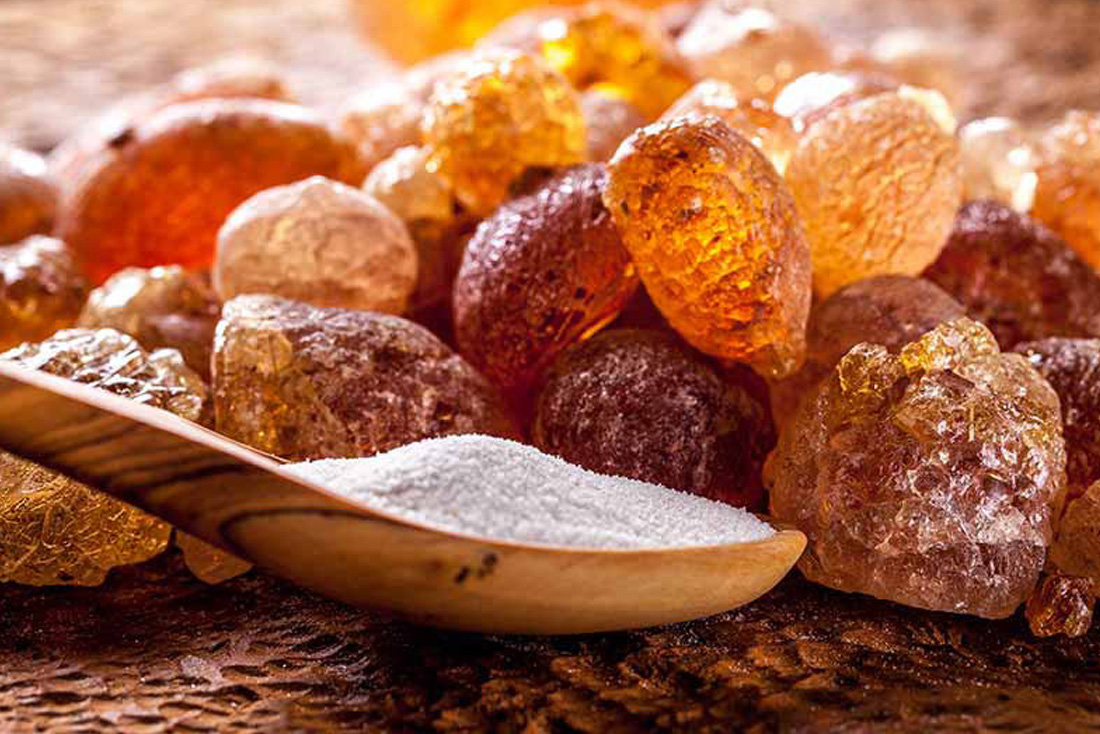Arabic Gum (Acacia) is a dried exudation obtained from the stems and branches of Acacia Senegal or Acacia Seyal trees. Although there are over 1100 Acacia species worldwide, Acacia Senegal and Acacia Seyal continue to be the most commercially exploited species of the entire Acacia resource. Which can only be found in Sudan, Chad, Senegal, and Nigeria, as part of the Arabic Gum belt. Sudan is a major Arabic Gum exporter. The areas of production is concentrated in the states of North Kordofan and Darfur.
Arabic Gum is widely used in the food and beverage industries, pharmaceuticals, cosmetics, textiles, Encapsulated Flavours, High Fiber Formulations, and painting.
Arabic Gum Specification
Acacia Senegal (Hashab)
PHYSICAL CHARACTERISTICS
Solubility it’s highly soluble in water, gives up to 50% solution and insoluble in ethanol
Hydrolysis products Passes test
CHEMICAL CHARACTERISTICS
Loss on drying Not more than 15% (105C, 5h).
Total ash* Not more than 4%
Specific rotation* (X )1 D (-22°) to (-34°)
Nitrogen content* 0.24 to 0.41%
Protein content* 1.58 to 2.7% (N x 6.6)
Arsenic Not more than 3 mg/kg
Lead Not more than 10 mg/kg
Heavy metals Not more than 40 mg/kg
6.2.9 Starch or dextrin Passes test
6 2.10 Tannin – bearing gums Passes test
Acacia Seyal (Talha)
Solubility It is highly soluble in water, gives up to 50% solution and insoluble in ethanol.
Hydrolysis products Passes test.
Specific rotation {.}D25C (+ 45) to (+ 60).
PURITY
Loss on drying Not more than 15 %( 105C, 5hts).
Total ash* Not more than 4%.
Nitrogen content* 0. 106 to 0.156%.
Protein content* 0.7 to 1 .00/0(N x 6.6).
Arsenic* Not more than 3mg/kg.
Lead* Not more than 10mg/kg.
Heavy metals* Not more than 40mg/kg.
Starch and dextrin Passes test.
Tannin – bearing gum Formation of a black precipitate indicates the presence of tannin
MICROBIOLOGICAL CRITERIA
Salmone//a sp. Negative per test.
E.coli Negative in lgm.


